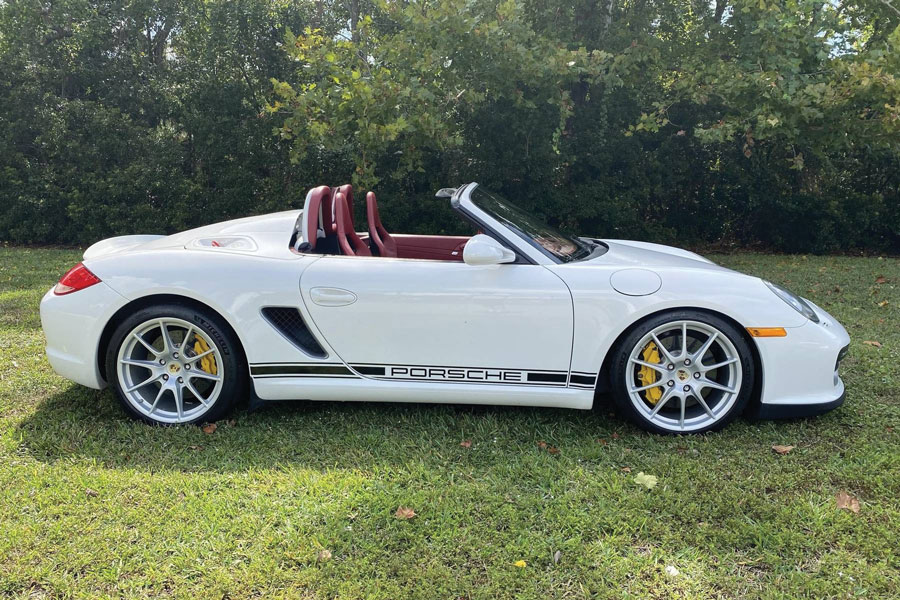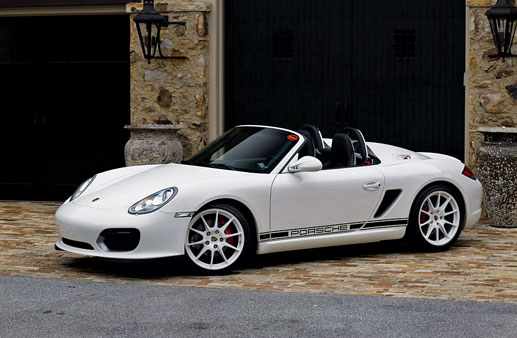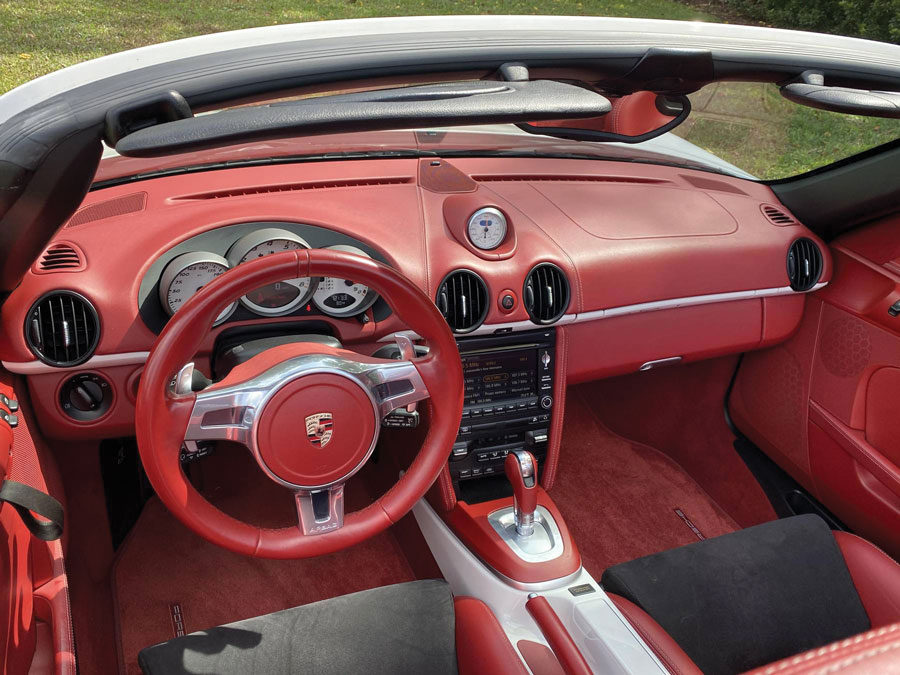
There are certain words in a Porsche model name that give you a hint that something special is going on. “Speedster” is one, but also “Spyder.” The latter moniker harks back to the mythic mid-engined 550 Spyder, which James Dean made famous after dying in one on a California backroad in 1955.
That grim history notwithstanding, Porsche has occasionally revived the Spyder name for mid-engine racing and street cars in the same way it has applied the Speedster name to cut-down sporting editions of its rear-engine cars. There never was a 914 Spyder, though the imagination conjures the concept readily enough. That leaves the Boxster to carry the name, which it has done several times.
Know your Spyders
The Spyder name came back to Porsche street cars for 2004 with the Boxster S “50 Years of the 550 Spyder” limited edition and again in 2008 with the Boxster RS 60 Spyder, commemorating the brand’s class win at the 1960 12 Hours of Sebring and overall win at the Targa Florio in the type 718 RS 60 sports racer. Both cars were largely paint-and-leather editions with numbered plaques and small power and suspension changes.
The next Spyder is the one we’re talking about. As the 987 generation of Boxster was nearing its end, Porsche produced a real hot rod. Although engine output was raised by only 10 horsepower above the Boxster S, the 320 ponies and 273 foot-pounds of the 2011–12 Boxster Spyder had to push less weight, and that weight was moved lower to the ground.
After the 987 Spyder, Porsche released the 918 Spyder. As a limited-production hybrid supercar, it’s outside the boundaries of an “Affordable Classic,” but the same heritage is easily spotted in its design.
Porsche came back to the Boxster lineage with a new Spyder in 2015 and again in 2019 with the current-generation 718 Spyder.

Why the 987?
At 10 years old, the 987-based Boxster Spyder is sitting in the sweet spot. Generally speaking, all the depreciation that’s going to happen has already happened, and the upside potential is impressive.
The 987 Spyder is a true lightweight performance edition. Porsche’s engineers went through and discarded everything that wasn’t strictly needed. They started with the power convertible top, replacing the bulky and heavy mechanism with a Bimini-type arrangement. The two-piece top is snapped and hooked into place by hand, with one piece to keep rain off your head and another to stop it being blown down the back of your neck. However, even with the top up, leaving this car outside in a rainstorm would be foolish.
But the factory wasn’t done yet. Who needs air conditioning in a true roadster? Not a Boxster Spyder owner. So there’s another chunk gone. Same with the radio. The music of the 3.4-liter engine and your choice of a 6-speed manual or 7-speed PDK transmission will have to do.
On the body, the doors and double-humped rear decklid are made of aluminum, the gas tank is smaller, and the 19-inch wheels are lighter, too. Inside you get carbon-fiber sport seats and racing-inspired red nylon loops to pull the doors closed. They even ditched the cupholders. Hallelujah!
In all, Porsche claimed to have removed about 175 pounds from the Spyder, giving it a wet curb weight under 3,000 pounds and a 0–60 mph time in the mid-four-second range.
The Boxster Spyder is also lowered by about an inch compared to the standard models, and it rides on stiffer springs. The result is handling that is even sharper than the much-lauded Boxster S.
The base price of a new 2011 Boxster Spyder was $62,150 and could soar upwards past $85,000 if you ticked all the options. Among the available extras was a set of carbon-ceramic brakes, but you could also restore the air conditioning, radio, cup holders and standard seats. Of course, doing so negated much of the weight savings, but to each his own.

Finding one
The oldest of this generation of Spyder is now a decade from new, so like many affordable classics, we haven’t seen too many of them crossing the blocks at traditional auctions. However, well-kept examples do tend to turn up online about once a month.
Realized sale prices range from the high-$40k to mid-$70k range over the past year. The price variation is mostly based on mileage, with a well-optioned 40,000-mile example pulling a winning bid of $48,300 including buyer’s premium (Bring a Trailer Lot 38689) and a 4,900-mile car with PDK recently bid up to a sale price of $75,600 (Bring a Trailer Lot 44153). That car showed an original sticker price of $85,630, so depreciation has been kind. A 2012 that was pushing six figures when new sold last year on Cars & Bids for $57,998 with 27k miles showing. Several other Spyders with low miles have traded close to their original $62,000–$65,000 MSRP in the past year.
With just under 900 examples originally imported to North America, the 987 Boxster Spyder is likely to appreciate smartly as it moves into classic territory. Newer Boxsters have surpassed the engine power ratings of the 987, but among the well-loved Boxster family, the 2011–12 Spyder is still something special. ♦